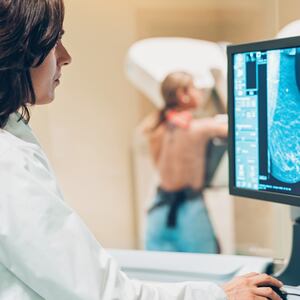While there’s been a lot of scary news around AI—from robots replacing our jobs to potentially killing us all in Terminator-esque apocalypse scenarios—there are also more hopeful signs that powerful machine learning algorithms and humans can coexist. One good example comes from medicine, where AI is already being used to help diagnose and identify diseases to help doctors streamline treatment for patients.
Now, it may even be used to zero in on the origins of one of the deadliest diseases out there.
A team of scientists at MIT and the Dana-Farber Cancer Institute published a paper Monday in the journal Nature Science where they show off the development of an AI called OncoNPC that predicts where a patient’s cancer came from in their body—information that can help determine more effective treatment decisions for patients and caregivers.
Specifically, the model is able to classify the source of at least 40 percent of tumors of unknown origin. This would mean that 15 percent more patients could become eligible for targeted treatment based on their cancers’ origin.
“That was the most important finding in our paper, that this model could be potentially used to aid treatment decisions, guiding doctors toward personalized treatments for patients with cancers of unknown primary origin,” lead author Intae Moon, an electrical engineering and computer science researcher at MIT, said in a statement.
In roughly 3 to 5 percent of all cancer cases, the source of a malignant tumor can’t be determined by traditional diagnostic means like radiology assessments. This results in a diagnosis of cancers of unknown primary (CUP) and greatly limits the treatment options for the patients.
“This patient group has dismal outcomes,” senior author Alexander Gusev, an oncologist at Dana-Farber, said in a statement.
To close this gap, the team created an AI trained on the medical records, tumor genetic sequencing data, and clinical information of more than 36,000 patients with known primary tumors. They then tested the model on roughly 7,000 primary tumors that it previously had not seen before.
The model successfully predicted the origins of the cancers with roughly 80 percent accuracy. It was also able to make high-confidence predictions that were 95 percent accurate. The team then tested it on a set of about 900 CUP tumors. They discovered that it was able to make high-confidence predictions for 40 percent of this set.
To make sure the findings were correct, the researchers looked at the specific CUP cases to see if the pathology data, patient history, and genetic mutations aligned with the predictions. They also looked at the inherited risks and mutations in the tumors to see if they lined up with the prediction.
“Validation is a challenge because there is no ground truth. Existing methods failed to identify the origin,” Gusev explained. “But the evidence we looked at showed us that the model is on the right track.”
Such a model could be incredibly beneficial for patients suffering from particularly deadly forms of cancer such as pancreatic cancer—but don’t realize it because they fall under the CUP category. Doctors will now be able to give them more precision treatment rather than just generalized chemotherapy that isn’t as effective. It could also help assist in smaller medical facilities where CUP cases are higher due to a lack of staffing and resources.
Of course, as with anything AI-related, it likely won’t be the panacea that we hope it to be. We should always be cautious against hype regarding these machine-learning models—especially when applied in the field that has a long and sordid history with medical and scientific racism.
But the model does offer a lot of promise, showing that bots aren’t all bad—and they could even save your life one day.









